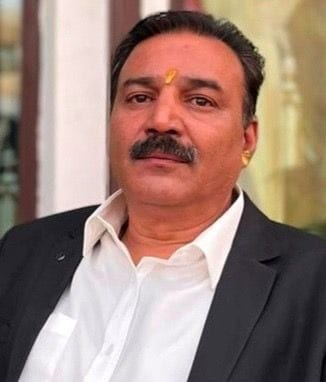By satish mahaldar
As the sacred bells echoed once again through the Chinar-lined courtyards of Kheer Bhawani, thousands of Kashmiri Pandits returned to the soil of their ancestors, supported by a remarkable effort from the Jammu & Kashmir administration. More than 71 government-sponsored buses facilitated the journey of yatris to this revered temple, with over 21 of those buses journeying further into village shrines—sacred sites that have long awaited the footsteps of returning devotees.
This pilgrimage, a symbol of resilience and renewal, was not an isolated event. Just days earlier, on 28th May 2025, the sacred Yagya at Swami Gopinath Ashram, Khar Yaar, Habba Kadal, saw participation in the thousands. On 27th April, the Shul Thap Annual Festival, organized by KECCS Pamposh, New Delhi, brought together nearly all KP associations in a defiant celebration of identity—even as the wounds of the Pahalgam massacre, where 27 tourists were brutally killed on April 22, remained fresh.
Meanwhile, GKPD announced an international Kashmir conference, and Zaan Travels was launched to facilitate heritage-based tourism. In the wake of such significant efforts to reconnect with heritage, identity, and sacred geography, one might expect unity within the community.
Instead, what followed was a display of selective condemnation and deeply troubling silence.
Why Was Dr. Sandeep Mawa Targeted?
Dr. Sandeep Mawa, a social activist and a promoter of pilgrimage tourism rooted in cultural revival, has recently faced condemnation from certain temple bodies and community associations. His only “crime”? Daring to build bridges between the past and the present. Daring to take initiatives that others only debate in seminars. Daring to belong to the Bhora community.
This selective condemnation begs the question: Why was Dr. Mawa targeted while other major events passed without criticism? Where were these same voices when temples were looted? When sacred lands were sold to private interests? When criminal elements masquerading as caretakers actively participated in the erasure of heritage?
The hypocrisy is glaring. When the sacred is sold, these so-called protectors of Dharma remain silent. When someone revives the sacred, they are the first to shout them down.
Swami Vivekananda’s Tears at Kheer Bhawani in 1865
Let us turn to the words of Swami Vivekananda, who once sat under the Chinar trees of Kheer Bhawani temple in deep meditation. Overwhelmed by the suffering of Hindus in Kashmir, he cried out to the Mother:
“Mother! How could you let this happen to your children?”
In a moment of divine realization, he heard within himself:
“What is it to you, Vivekananda, if I choose to let them suffer? Do you protect or do I protect?”
Vivekananda was humbled. But that divine silence was not an invitation to human inaction. It was a call for inner strength and outer courage—to act with integrity, to uphold Dharma, to expose falsehood cloaked in ritual, and to never tolerate injustice in the name of tradition.
Today, the greatest danger to the Kashmiri Pandit community comes not from the outside, but from within: from a small elite that uses religion as a weapon, controls narratives, and drowns dissent in silence. They issue moral “fatwas” against reformers, while quietly aligning with those who erode our temples and misuse public trust for private gain.
They collect benefits from every government scheme, yet contribute nothing to the collective healing of the community. They oppose any initiative that does not pass through their narrow lens of legitimacy. They see community revival not as a shared goal, but as a threat to their monopoly on power.
This pattern is not just divisive—it is dangerous. It risks delegitimizing genuine efforts at cultural revival. It discourages brave voices from taking initiative. It pits one group of Pandits against another based on caste, clan, or personal loyalties.
The Government of Jammu & Kashmir and the Union Government must:
Investigate those spreading hate and division within the community.
Audit the misuse and sale of temple lands by vested interests.
Ensure equal protection and promotion of all individuals and organizations working toward religious and cultural revival—regardless of their surname or background.
As Kashmir opens its doors again to sacred return, we stand at a crossroads. We can either follow the silence of self-interest or the path of Vivekananda—who saw divine grandeur in suffering but refused to accept injustice as destiny.
This is not just about one individual. It is about who we are as a people. Will we protect the sacred, or will we let it be auctioned off and silenced?
History will remember not just who acted—but who chose not to.(CNI)
